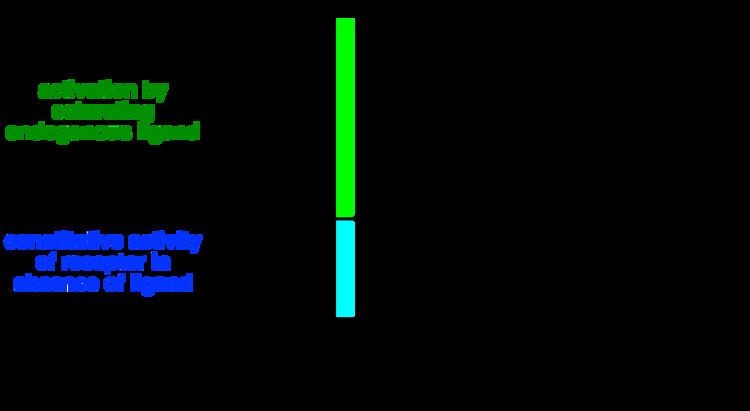 | ||
In the field of pharmacology, an inverse agonist is an agent that binds to the same receptor as an agonist but induces a pharmacological response opposite to that agonist. A neutral antagonist has no activity in the absence of an agonist or inverse agonist but can block the activity of either.
A prerequisite for an inverse agonist response is that the receptor must have a constitutive (also known as intrinsic or basal) level activity in the absence of any ligand. An agonist increases the activity of a receptor above its basal level, whereas an inverse agonist decreases the activity below the basal level.
The efficacy of a full agonist is by definition 100%, a neutral antagonist has 0% efficacy, and an inverse agonist has < 0% (i.e., negative) efficacy.
Examples
An example of a receptor that possesses basal activity and for which inverse agonists have been identified is the GABAA receptor. Agonists for the GABAA receptor (such as benzodiazepines) create a sedative effect, whereas inverse agonists have anxiogenic effects (for example, Ro15-4513) or even convulsive effects (certain beta-carbolines).
Two known endogenous inverse agonists are the Agouti-related peptide (AgRP) and its associated peptide Agouti signalling peptide (ASIP). Both appear naturally in humans, and each binds melanocortin receptors 4 and 1 (Mc4R and Mc1R), respectively, with nanomolar affinities.
The opioid antagonists naloxone and naltrexone are also partial inverse agonists at mu opioid receptors.
